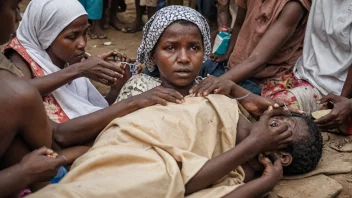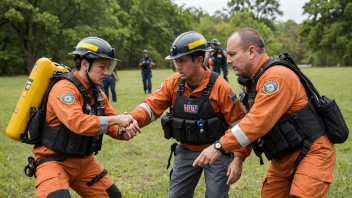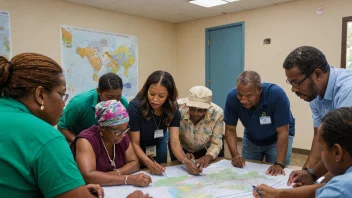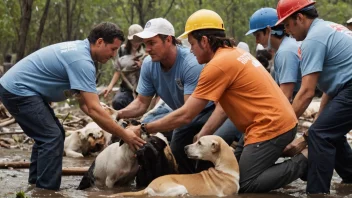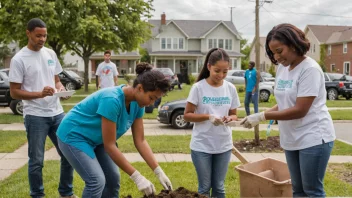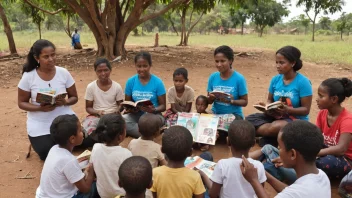Natural disasters can leave communities devastated, not only physically but also emotionally and psychologically. Recovery meetings play a vital role in helping individuals and communities rebuild and heal after such traumatic events. These meetings provide a space for sharing experiences, discussing recovery strategies, and fostering community resilience. This article delves into the key elements required to facilitate effective recovery meetings post-disaster, offering insights, strategies, and best practices to ensure these gatherings are impactful and supportive.
The Importance of Recovery Meetings
Recovery meetings serve several critical functions in the aftermath of a disaster. They are not merely gatherings; they are structured environments that promote healing, connection, and empowerment. Here are some of the primary benefits:
- Emotional Support: Participants can share their feelings and experiences in a safe space, reducing feelings of isolation and anxiety.
- Information Sharing: These meetings allow for the dissemination of crucial information regarding available resources, recovery programs, and mental health support.
- Community Building: Recovery meetings foster a sense of community, helping individuals connect and support one another in their healing journeys.
- Empowerment: By participating in discussions and planning, individuals can take an active role in their recovery process, fostering a sense of agency and control.
Preparing for Recovery Meetings
1. Assessing Community Needs
Before organizing recovery meetings, it is essential to assess the specific needs of the affected community. This can be achieved through surveys, interviews, or focus groups. Understanding the unique challenges faced by individuals in the aftermath of a disaster will help tailor the meetings to address these concerns effectively.
2. Establishing a Facilitator Team
Choosing the right facilitators is crucial for the success of recovery meetings. Facilitators should be trained in group dynamics, active listening, and conflict resolution. Ideally, they should also have a background in mental health or community organizing, allowing them to guide discussions sensitively and effectively.
3. Defining Objectives and Structure
Clearly defining the objectives of the recovery meetings is essential. Are they focused on emotional support, resource sharing, or community planning? After establishing objectives, consider the structure of the meetings. Will they be held weekly, bi-weekly, or monthly? What will the format be? A consistent structure helps participants know what to expect and fosters a sense of security.
Facilitating Effective Meetings
1. Creating a Safe Space
Safety is paramount in recovery meetings. Establish ground rules that promote respect, confidentiality, and active listening. Ensure that everyone feels welcome to share without fear of judgment. Physical spaces should be accessible and comfortable, allowing participants to focus on the discussions.
2. Encouraging Participation
Facilitators should actively encourage participation from all attendees. Use techniques such as open-ended questions, small group discussions, and icebreakers to promote engagement. Recognize that some individuals may be hesitant to speak, so creating opportunities for anonymous sharing, such as written reflections, can also be beneficial.
3. Providing Resources and Information
Part of the recovery process involves accessing resources. Use meetings as a platform to share information about available local services, mental health support, and recovery programs. Consider inviting guest speakers from organizations specializing in disaster relief to provide expert insights and answer questions.
4. Addressing Emotional Needs
Recognize that many attendees may be experiencing trauma or grief. Incorporating mindfulness exercises, guided meditations, or grounding techniques can help participants manage their emotions. Additionally, having a mental health professional available during meetings can provide immediate support to those in need.
Follow-Up and Sustainability
1. Continuous Feedback
After each meeting, gather feedback from participants to assess what worked well and what could be improved. This can be done through anonymous surveys or group discussions. Continuous feedback will help refine the meeting structure and content, ensuring they remain relevant and effective.
2. Building a Support Network
Post-meeting, consider creating a network of support groups that can meet independently. This can empower participants to continue their recovery journey beyond the formal meetings. Encourage attendees to connect through social media or local community boards to foster ongoing support.
3. Evaluating Long-Term Impact
As recovery progresses, it is essential to evaluate the long-term impact of the meetings. Are participants feeling more connected? Are they accessing available resources? Conduct follow-up surveys several months after the meetings conclude to assess the ongoing benefits of these gatherings.
Case Studies: Successful Recovery Meetings
Examining successful recovery meetings can provide valuable insights and inspiration. Here are two case studies that illustrate effective practices:
Case Study 1: Hurricane Katrina Recovery Meetings
In the aftermath of Hurricane Katrina, community leaders in New Orleans organized recovery meetings that focused on emotional support and resource sharing. They employed local artists to create a welcoming environment, using art as a medium for expression. These meetings not only helped individuals share their experiences but also fostered a sense of community resilience that continues to this day.
Case Study 2: Wildfire Recovery in California
After devastating wildfires in California, recovery meetings were established to assist affected residents. The meetings emphasized mental health support, with licensed therapists available to facilitate discussions. Participants were encouraged to share their stories and coping strategies, leading to a supportive network that empowered individuals to navigate their recovery journeys together.
Conclusion
Recovery meetings are a vital component of the healing process following a disaster. By creating safe spaces for emotional support, sharing resources, and fostering community connections, these gatherings can significantly impact individuals and communities in their recovery journeys. Through careful planning, effective facilitation, and ongoing support, we can help communities rebuild not just their physical structures but also their emotional resilience and sense of unity. As individuals and organizations, we have the power to facilitate healing and inspire action in the face of adversity.

